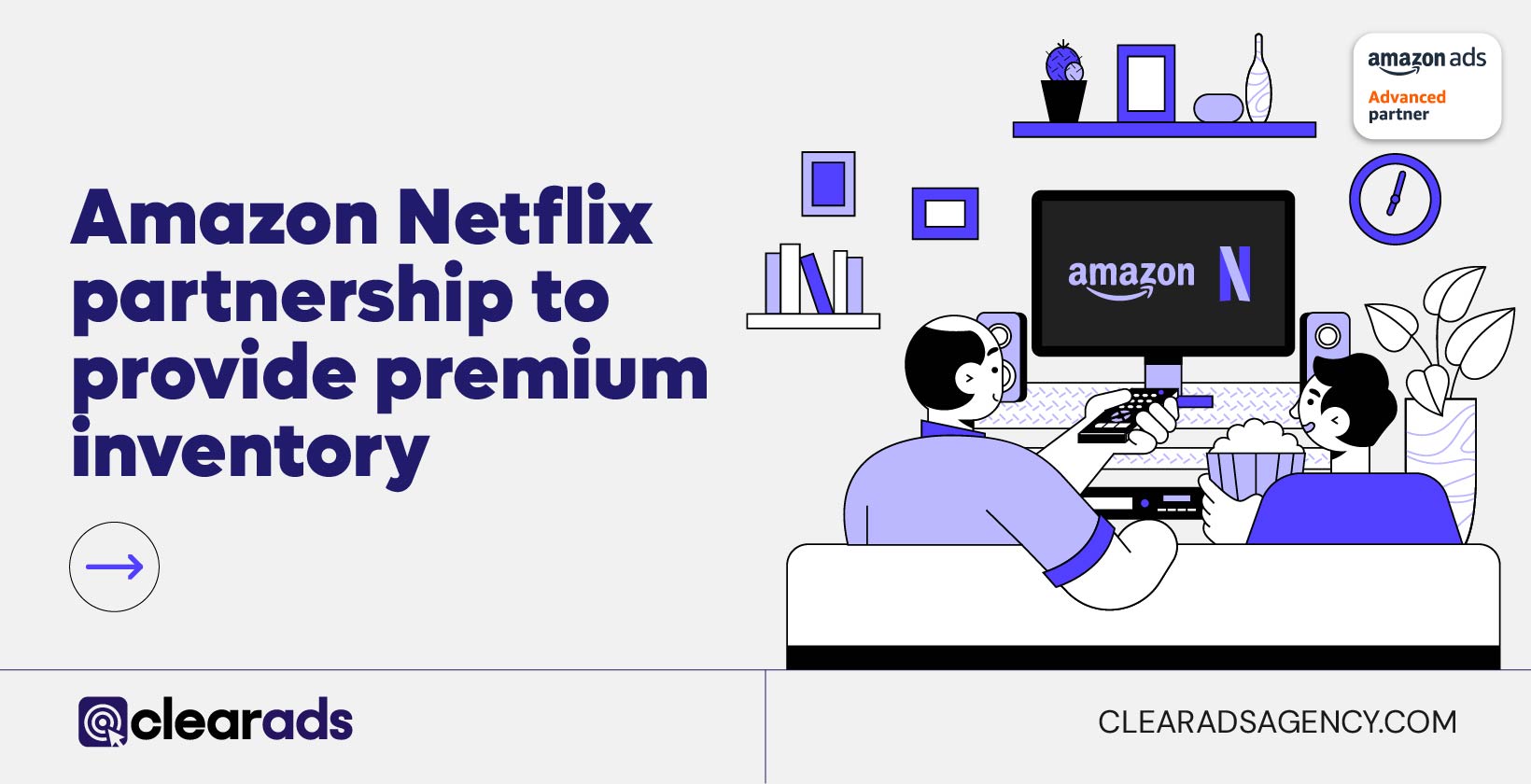It’s time to power up your approach with the newest trends in keyword research. In the fast-paced e-commerce world, specialized strategies make all the difference. Explore these tailored tactics designed specifically for high-volume sellers and see how they can enhance your visibility and drive sales on Amazon. Let’s get started!
Importance of Keyword Research for Amazon Advertising
Continuous keyword research is the foundation of any successful advertising campaign. It is often beneficial before activating your campaign to do general keyword research based on previous campaigns or from your competitor’s targeted terms. You may even ask an AI for generic terms or do a brief product search on Amazon’s homepage.
The problem with initial keyword research is the limited historical data available for your product. Even if you have advertised on a different platform sellers should remember that consumer behavior varies from platform to platform. This means that successful terms on Google may need to be more successful or relevant on Amazon.
Because of this, it is very beneficial to continuously optimize the keywords in your listings for the most effective campaigns. Including your negative and back-end terms! The longer your ads are running the more specific you can get with your keywords, which leads to a far more effective campaign.
You can use this research to drastically improve your conversion rates by reaching more relevant shoppers!
The Power of Keywords for High-Volume Amazon Sellers
In the expansive Amazon marketplace, a strategic approach is essential. For high-volume sellers, one crucial strategy stands out: keyword research. This tool significantly impacts visibility and success within Amazon Advertising.
But effective keyword research goes beyond adding popular terms to your listings. It’s a carefully planned tactic that can help seasoned Amazon sellers gain a strong position in their market niche. By integrating a set of well-selected keywords into your product descriptions and ads, you can enhance your product’s visibility, leading to an increase in sales and a robust market presence.
However, to truly benefit from keyword research, sellers need to understand their customers’ search behavior and intent. This insight is critical for developing an optimal keyword strategy. For high-volume sellers, this means gaining a thorough understanding of your customers, anticipating their search habits, and aligning your keywords accordingly. This strategic alignment can attract potential customers and convert them into loyal buyers.
In the competitive environment of Amazon, keywords act as a bridge connecting sellers to customers. They’re more than just words; they’re a reflection of what customers are searching for. So, for high-volume sellers looking to boost their sales and outshine their competition, mastering the art of keywords isn’t just helpful—it’s essential.


Traditional Keyword Research Techniques for Amazon Advertising
Foundation of Keyword Research for High-Volume Sellers on Amazon
Among the plethora of strategies for successful Amazon Advertising, the art of mastering traditional keyword research techniques for high-volume sellers has continually proven its worth. These well-established methods are time-tested, providing a solid foundation for high-volume sellers aiming to boost visibility and increase sales on Amazon.
Several well-established traditional keyword research methods have proven effective over the years. Here are a few key methods:
- Competitor Analysis: By analyzing what keywords your competitors are using, especially those with high-performing products, you can discover effective keywords relevant to your product. Look for keyword inspiration in their product titles, descriptions, and feature lists.
- Amazon Autocomplete: Amazon’s search feature can be a great tool for keyword research. Start typing a keyword relevant to your product in the search bar and see what other phrases Amazon suggests. These are often phrases that customers frequently use.
- Amazon’s “Customers who bought this also bought” Section: By checking the keywords used in the listings of products that frequently get purchased together with your product or competitor’s product, you can uncover some valuable keywords that you might have missed otherwise.
- Keyword Research Tools: Tools like Google Keyword Planner, Amazon Keyword Tool, or other paid tools like Helium10, Jungle Scout, and SEMRush can provide valuable insights about popular keywords, search volume, and competition level.
- Use of Long-Tail Keywords: Instead of focusing solely on single-word keywords, consider phrases or long-tail keywords that a potential customer might use when searching for your product. These often have less competition and can improve the likelihood of your product being found.
- Analyzing Customer Reviews and Q&As: Your customers can provide valuable insight into the language they use when talking about your products. Reviews and Q&As often contain useful keywords that you can incorporate into your listing.
Remember, after identifying potential keywords, it’s crucial to test their effectiveness. Monitor your search rankings, traffic, and conversion rates for each keyword, and adjust your strategy as necessary.
Identifying relevant, high-search-volume keywords is the cornerstone of traditional keyword research. A seemingly simple task, but it’s a game-changer for high-volume sellers. It’s all about choosing the right keywords—those that your potential customers are likely to use when searching for products like yours. Once these keywords are identified, you can optimize your listings, ensuring they gain the visibility they deserve in a crowded marketplace.
But the process doesn’t stop there. To fully leverage the power of these keywords, high-volume sellers must strategically infuse them into every aspect of their product listings. This includes optimizing product titles, bullet points, and descriptions with strategically chosen keywords.
Product titles should be catchy yet informative, integrating the primary keywords. Bullet points should highlight key features and benefits, utilizing a mix of primary and secondary keywords. Descriptions should provide comprehensive details about the product, seamlessly integrating relevant keywords without compromising the natural flow of language.
By harnessing these traditional keyword research techniques, high-volume sellers can drive traffic to their products, improve rankings, and ultimately, boost their sales on Amazon. In the competitive world of Amazon selling, keywords truly are the keys to success.
Innovative Trends in Keyword Research for Amazon Advertising
Staying Ahead with Cutting-Edge Trends for High-Volume Sellers
As the world of e-commerce continually evolves, staying on top requires more than just following the traditional playbook. It’s about embracing the innovative trends in keyword research for high-volume sellers and employing strategies that ensure you remain ahead of the curve.
Here are some current trends high-volume sellers could incorporate into their keyword research techniques:
- Artificial Intelligence (AI) and Machine Learning (ML): AI and ML are revolutionizing keyword research. Advanced tools powered by these technologies can analyze vast amounts of data to identify high-performing keywords, predict trends, and even suggest keyword optimizations for your listings.
- Voice Search Optimization: With the increasing popularity of voice assistants like Alexa and Siri, optimizing your keywords for voice search is becoming crucial. This often involves incorporating more natural-sounding, conversational phrases into your listings.
- Long-tail Keywords: Long-tail keywords are longer, more specific keyword phrases that customers are likely to use when they’re closer to making a purchase.
- Semantic Search: Search engines are becoming smarter at understanding the context and intent behind search queries. Therefore, incorporating semantically related keywords (keywords that relate to the same theme or topic) into your listings can help you rank higher.
Remember, effective keyword research is about understanding your customers and their needs. The goal should always be to make it easier for potential customers to find your products on Amazon.
In recent years, advanced analytics tools and software have reshaped how high-volume sellers approach keyword research. These tools, often powered by AI, dig deeper into data, uncovering popular keywords and emerging trends, and consumer behavior patterns. This wealth of information allows high-volume sellers to adjust their keyword strategies proactively, capitalizing on trends before they become mainstream.
Here are a few examples of external research tools you could try:
- Google Trends: This tool allows you to see how the popularity of a specific keyword has changed over time. It also lets you see seasonal spikes in keyword popularity and can show you popular-related queries.
- SEMrush: SEMrush is an all-in-one marketing toolkit. For keyword research, it offers features such as keyword difficulty, the number of search results, SERP analysis, and more. Its Keyword Magic Tool provides extensive lists of keyword suggestions and its organic research feature can help identify keyword opportunities based on competitor data.
- Ahrefs: Similar to SEMrush, Ahrefs offers extensive keyword research features, including keyword difficulty, search volume, related keywords, and more. It’s also popular for its backlink analysis and competitive analysis features.
- Helium 10: This is a comprehensive suite of tools designed specifically for Amazon sellers. Its features include product and keyword research, listing optimization, product launches, keyword tracking, and more.
- Sonar by Sellics: A free Amazon keyword research tool that provides a database of Amazon shopper search queries and a reverse ASIN lookup to uncover the keywords any ASIN is ranking for.
Remember, while these tools can provide valuable insights, they should be used in conjunction with a comprehensive understanding of your product, market, and target audience for optimal results.
Another game-changer in the keyword research arena is the shift toward long-tail keywords. As customers increasingly use detailed, specific phrases to find exactly what they’re looking for, incorporating long-tail keywords in your Amazon listings can greatly improve your visibility, boost your rankings, and capture high-intent customers. These keywords are particularly useful for customers who use voice to search for products!
The surge in the use of voice search necessitates a new approach to keyword research. As consumers lean on voice assistants like Amazon’s Alexa, Google’s Assistant, or Apple’s Siri to make purchases, high-volume sellers must optimize their listings for voice searches. This involves using natural, conversational language and full-sentence questions that mimic how customers speak.
The introduction of AI-powered keyword research tools is revolutionizing how sellers conduct research. These tools use machine learning algorithms to analyze vast amounts of data, identify high-performing keywords, predict trends, and even suggest keyword optimizations for your listings.
In light of these recourses, it is important not to neglect the information you can gather directly from Amazon through analytics like the search terms query report. There are tools at your disposal that are critical to your campaigns and give you direct access to your consumer’s behavior.
Understanding Amazon’s A9 Algorithm and SEO Factors
Optimizing Keywords for Improved Ranking and Visibility
Success on Amazon is largely determined by the mysterious A9 algorithm – a powerful, data-driven machine that decides how products rank in Amazon search results. As a high-volume seller, gaining a strong grasp of this algorithm and the SEO factors it considers is essential to optimize your listings and improve visibility.
The Amazon A9 algorithm is heavily influenced by several key factors. The most impactful among them are relevance, performance, and customer satisfaction.
- Relevance encompasses your product listing’s content, including the title, description, bullet points, and back-end keywords. Here lies the importance of an effective keyword strategy – using the right keywords in your product listings is vital to ensure Amazon perceives your product as relevant to customer searches.
- Performance metrics include sales velocity, historical sales data, conversion rates, and overall sales. High-performing products are likely to rank higher in search results. Thus, incorporating high-performing keywords into your product listings can boost your performance, positively impacting your product’s visibility and ranking.
- Customer Satisfaction and retention metrics, such as product reviews, ratings, and order defect rate, also play a crucial role in the A9 algorithm. Although not directly related to keywords, maintaining high customer satisfaction can lead to more positive reviews, which, in turn, can positively influence your product’s rankings.
By understanding these key influencing factors, you can tailor your keyword strategy to meet the A9 algorithm’s requirements.
Remember, it’s important to continually monitor and adapt your keyword strategies in response to changing market trends and customer behavior. This will ensure you maintain a competitive edge in the marketplace, capturing more visibility and driving more sales on Amazon.
How to optimize keywords and product listings
Once you have got your keywords it is important to continuously optimize your campaigns to maintain your high performance! I am going to include our top 7 ways you could optimize your keywords for the most effective campaigns!
Keyword Research: This is your first step toward Amazon’s success. Identify high-volume, relevant keywords using reliable tools. Incorporate both short-tail (for broad searches) and long-tail keywords (for specific queries, often resulting in better conversion).
- Title Optimization: Keep the title clear, precise and avoid keyword stuffing, which can backfire by lowering your rankings.
- Feature and Description Optimization: Make sure these sections are readable, information-rich, and naturally integrate your keywords.
- Backend Keywords: Include synonyms, abbreviations, alternate names, and other keyword variations that aren’t in your title or description.
- Leveraging Customer Reviews and Q&A: Monitor the language and terms customers use in reviews and Q&A sections. You can often uncover additional relevant keywords from real-world users.
- Performance Monitoring: Keep a close eye on your keyword performance using Amazon’s campaign reports and performance dashboards. Non-performing keywords should be replaced promptly.
- Regular Listing Updates: Amazon SEO is an ongoing task, not a one-off activity. Update and optimize your listings regularly based on keyword performance, market trends, and competitive landscape shifts.
Gear Up Your Amazon Advertising Arsenal as a High-Volume Seller
The secret to Amazon’s success lies in powerful keyword research, and that requires a toolbox packed with cutting-edge resources. These instruments of insight dig deep into data, sharpening your strategies, and propelling your performance to stellar heights.
- Keyword Research Tools: Leverage platforms that unveil trending keywords, untangle search volumes, and reveal competition levels. Harness the power of solutions like Jungle Scout, Helium 10, SEMRush, and Ahrefs for comprehensive keyword intel, while tools like Sonar by Sellics offer a window into the Amazon-focused keyword landscape.
- Competitor Analysis Tools: Decode the keyword strategies of your rivals with tools that offer a competitive edge. Viral Launch and SellerApp shine a spotlight on high-performing keywords within your niche, helping you stay one step ahead.
- Amazon’s Proprietary Tools: Tap into the data goldmine offered by Amazon itself. With Amazon Brand Analytics, exclusive to brand registered sellers, dive deep into search data right from Amazon’s extensive user base. Additionally, the Campaign Manager in Seller Central can be your compass to navigate the performance of your keywords in paid campaigns.
- AI-Powered Solutions: Elevate your keyword research to the next level with advanced AI and machine learning tools. Powerhouses like Teikametrics, Feedvisor, and Cash Cow Pro crunch enormous data sets swiftly, offering predictive insights to keep you ahead of trends and optimize your keyword strategies.
- Amazon Advertising Features: Master the art of Amazon Advertising by deploying campaigns tailored to your keyword research. Sponsored Products, Sponsored Brands, and Sponsored Displays are your allies to drive laser-focused traffic to your listings, boosting visibility and sales.
Armed with these tools and resources, you’ll find your keyword research prowess enhanced, and your Amazon advertising strategy invincible. Beyond uncovering high-performing keywords, these resources provide invaluable insights into market trends, competitive dynamics, and customer behaviors. For the high-volume seller, these instruments are not just tools – they’re game-changers for driving visibility, multiplying sales, and reigning supreme in the competitive Amazon arena.
As an established Amazon seller, strategically bolstering your operations is key to thriving in the high-volume arena. This involves a robust approach to keyword research, tuning into the latest market trends, and harnessing advanced tools and resources.
Focus on unearthing high-volume, relevant keywords, and infusing these into optimized product listings. Regularly reassess and revamp your strategy, guided by keyword performance and evolving market dynamics.
Make the most of sophisticated solutions like Amazon’s proprietary tools, AI-powered platforms, and data-centric keyword research utilities. Capitalize on Amazon Advertising features to guide targeted traffic, enhance visibility and escalate sales. Imbibe these strategic elements in your Amazon operations to solidify your market presence, elevate visibility, and secure your competitive advantage.
Our account managers are skilled in the tools required to analyze and adjust your campaigns for the best results. Through the help of one of us, you can save time on analyzing data and focus on what matters most to you, your business.
To find out more about how we can help your business grow and take advantage of your brand benefits, request a callback today!


